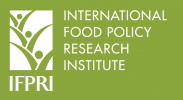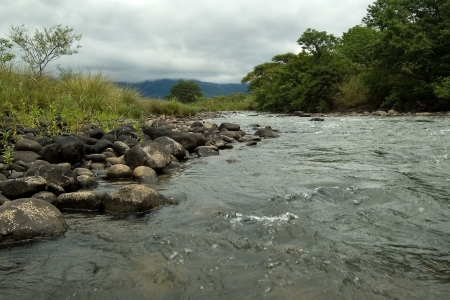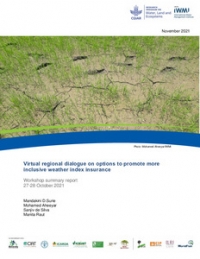Groundwater plays an increasingly important role in improving food security and reducing poverty. Groundwater storage can increase the resilience of water supply systems, supporting proper functioning of irrigated agriculture and associated agro-ecological systems in the dry season and during droughts. Presently, more than a third of irrigated cropland in the world depends on groundwater. A significant share of groundwater-irrigated areas overdraft groundwater, which jeopardizes the sustainability of irrigated agriculture in the long term, raises extraction costs, and damages groundwater-dependent ecosystems in those areas. However, in the near term, ceasing groundwater overuse in these areas can have negative food security and socio-economic impacts on rural communities within established agricultural systems that rely on groundwater. Meanwhile, underutilization of groundwater is common in some other areas, in particular in Sub-Saharan Africa, where farmers suffer crop losses during drought years despite abundant water beneath parched land. Various existing studies have examined groundwater overdraft issues at local and regional scales, using economic and hydrological models. More recently, researchers have assessed global groundwater overdraft using global-scale hydrological models and historical groundwater use records. Nevertheless, there is a lack of knowledge of global groundwater irrigation sustainability and the food security impacts of ceasing groundwater overdraft in the short term. Filling this knowledge gap can provide useful policy insights for securing future food supplies and sustaining groundwater-related ecosystem services. A spatially explicit groundwater balance module has been set up, which simulates groundwater recharge, discharge (as base flow) and groundwater pumping, using existing hydrological and hydrogeological information for major aquifers around the world. Groundwater store is divided into an “active store that is connected to surface water” (shallow aquifer) and a “fossil store that is not connect to surface hydrological processes or shallow aquifer but can be accessed with deep tube wells” (deep aquifer). The new module is linked to the global hydrological model (IGHM) and the water management model (IWSM) in the IMPACT (International Model for Policy Analysis of Agricultural Commodities and Trade) Modeling System. In 2015, we will improve the structure of the new groundwater module and its calibration and validation. A paper will be submitted which summarizes the newly developed groundwater module and its integration into the IMPACT Modeling System. In collaboration with IWMI, the model will be applied to regional studies on groundwater management and food security impacts in India and China. Scenario analysis will be conducted to explore the socioeconomic consequences of ceasing groundwater overdraft, and to identify promising options that can mitigate unfavorable consequences of ceasing overdraft.
menu





/index.jpg?itok=EzuBHOXY&c=feafd7f5ab7d60c363652d23929d0aee)









